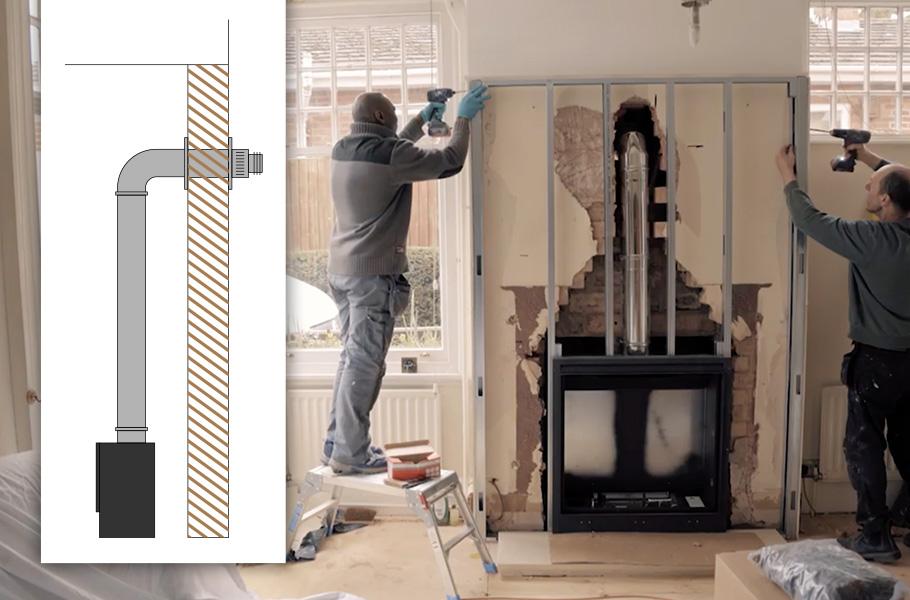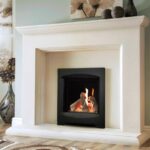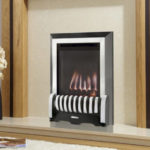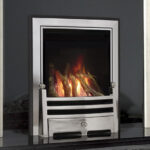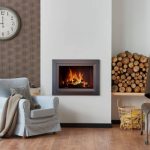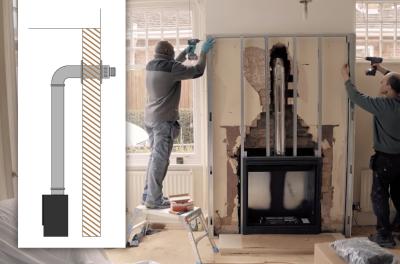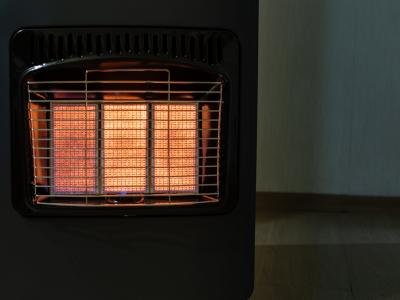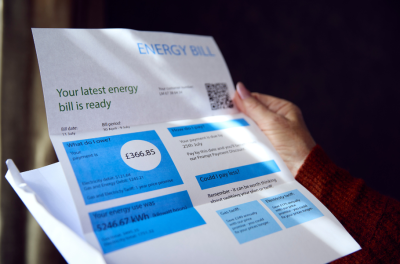We use cookies to improve your experience and our business. See our privacy/cookie policy or continue browsing to accept our use of cookies. View our cookie policy.
What’s Included in a Balanced Flue Gas Fire Installation?
A balanced flue gas fire can be an excellent choice when considering a new heating solution for your home. These fires offer a sleek, modern appearance, providing efficient and safe heating. However, to ensure optimal performance and safety, it is crucial to understand what’s included in a balanced flue gas fire installation. In this post, we’ll explore the key components and the installation process, emphasising the importance of professional installation.
Components of a balanced flue gas fire

A balanced flue gas fire is made up of the following components:
Fire unit
The fire unit is at the heart of a balanced flue gas fire. This component is responsible for generating the heat and creating the visually appealing flames. Fire units come in various designs and sizes, allowing you to choose one that complements your home’s décor and meets your heating needs. Some popular options include contemporary glass-fronted units, traditional brick-effect fires, and minimalist hole-in-the-wall designs.
When selecting a fire unit, consider factors such as heat output, efficiency, and fuel type. Many balanced flue gas fires are available in natural gas or LPG (liquefied petroleum gas) variants, so choose the one compatible with your home’s fuel supply. Plus, look for features like remote control operation, programmable thermostats, and multiple heat settings, which can enhance convenience and energy savings.
Flue system
The flue system is a critical component. Unlike conventional chimneys, a balanced flue system consists of two concentric pipes: an inner pipe that expels the combustion gases and an outer pipe that draws in fresh air for combustion. This closed-loop system ensures that the fire operates efficiently and safely, as it does not rely on the room’s air for combustion or expel emissions into the living space.
The flue system can be installed horizontally through an external wall or vertically through the roof, depending on the fire's location and your home's layout. Horizontal flue systems are more common for balanced flue gas fires, as they offer greater flexibility in positioning the fire unit. The flue pipes are typically made of high-grade stainless steel, which is durable, corrosion-resistant, and can withstand high temperatures.
Installation process
The process of installing your balanced flue gas fire involves:
Site survey and assessment
Before installing your fire, a professional installer will conduct a thorough site survey and assessment. This process involves checking the suitability of the proposed location and ensuring adequate space for the fire unit and the flue system. The installer will also assess the room’s ventilation and provide sufficient clearance from combustible materials, such as curtains or furniture.
During the site survey, the installer will also consider factors such as the proximity to electrical outlets, the accessibility of the gas supply, and the potential impact on the building’s energy efficiency. They may recommend additional insulation or draught-proofing measures to optimise the performance of the balanced flue gas fire and minimise heat loss.
Preparing the area
Once the location has been deemed suitable, the installer will prepare the area for the fire unit. This may involve creating an opening in the wall or constructing a false chimney breast to house the fire. The installer will ensure that the opening is supported and framed correctly, taking into account the weight and dimensions of the chosen fire unit.
If the installation requires a false chimney breast, the installer will use suitable materials, such as fireproof plasterboard or brick, to construct a safe and stable structure. They will also ensure that electrical or gas connections are correctly routed and concealed within the chimney breast, maintaining a neat appearance.
Installing the fire unit
With the area prepared, the installer will carefully place the fire unit into the opening. They will secure the unit, ensuring it is level and aligned with the surrounding wall. The installer will also check that the fire unit is correctly connected to the gas supply and that all connections are secure and leak-free.
The installer will follow the manufacturer’s guidelines and use appropriate tools and fixings to ensure a safe and reliable job. They may also make necessary adjustments to the fire unit’s settings, such as the gas pressure or flame height, to optimise its performance and efficiency.
Setting up the flue system
The next step is to install the flue system. The installer will carefully route the flue pipes from the fire unit to the external wall, ensuring they are adequately supported and sealed at each joint. The flue system must be installed following the manufacturer’s specifications and local building regulations to ensure optimal performance and safety.
The installer will use specialised tools and techniques to cut, join, and seal the flue pipes, ensuring a secure and airtight connection. If the specific flue system design requires, they will install any necessary components, such as flue terminals, wall plates, or condensate drains.
Final checks and testing:
Your installer will perform a series of final checks and tests before completing the job. They will check that the fire unit operates correctly, igniting and extinguishing as intended. They’ll also test the flue system to ensure it is balanced and drawing correctly, allowing the combustion gases to be safely expelled while drawing in fresh air. Any necessary adjustments will be made to ensure optimal performance and safety.
As part of the final checks, they’ll also verify that all electrical and gas connections are secure, that the fire unit is sealed correctly, and that the surrounding area is clean and debris-free. They may also demonstrate the fire's operation to you, explaining any controls or features and answering your questions.
Importance of professional installation
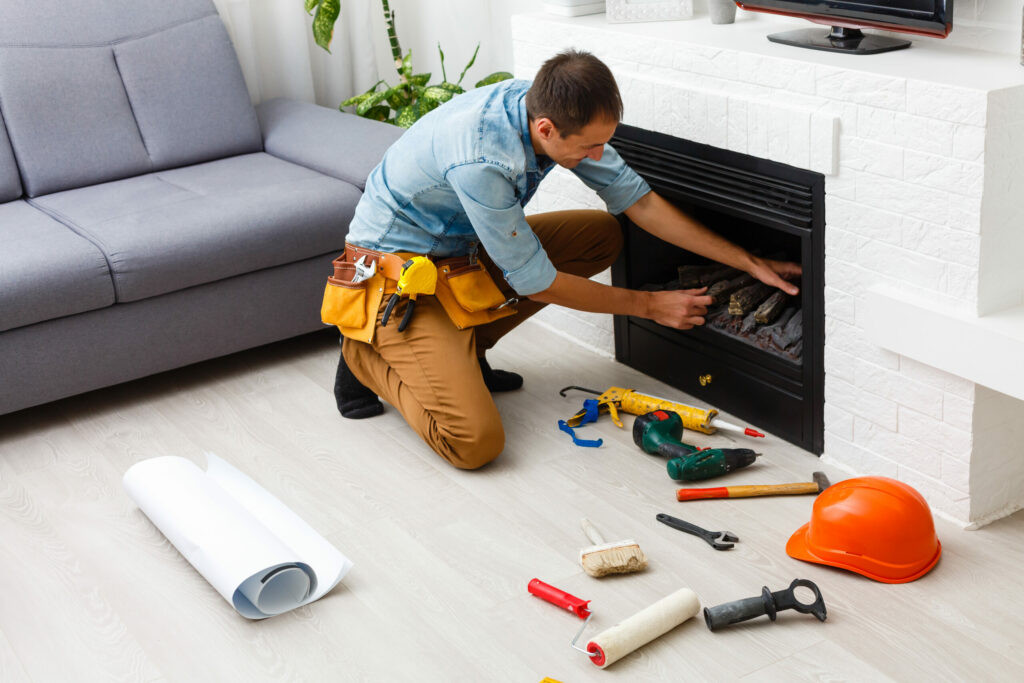
Why is it essential to have a professional install your balanced flue gas fire? Here are the main reasons:
Ensuring safety and compliance
Installing a balanced flue gas fire is not a DIY task. It requires specialised knowledge, skills, and tools to ensure the installation is performed safely and complies with all relevant regulations. A professional installer will be able to handle the gas connections, electrical components, and flue system installation, minimising the risk of gas leaks, carbon monoxide poisoning, or fire hazards.
In addition to their technical skills, professional installers are also well-versed in the latest building regulations and safety standards. They will ensure that your balanced flue gas fire installation adheres to all applicable codes and guidelines, giving you peace of mind and protecting your home and family.
Optimal performance and efficiency
A professionally installed balanced flue gas fire will operate at peak performance and efficiency. The installer will ensure that the fire unit is correctly calibrated, the flue system is properly balanced, and the air vent provides an adequate supply of fresh air. This attention to detail will produce a fire that delivers consistent, controllable heat while minimising energy consumption and running costs.
A well-installed balanced flue gas fire can contribute to a healthier indoor environment. By drawing combustion air from outside and expelling combustion gases through the flue system, the fire helps maintain good indoor air quality and prevents the build-up of harmful pollutants.
Warranty and after-sales support
When you choose professional installation, you can have peace of mind knowing that your balanced flue gas fire is covered by the manufacturer’s warranty. Most manufacturers require professional installation to validate the warranty, as improper installation can lead to damage or malfunction. Additionally, a reputable installer will provide after-sales support, addressing any questions or concerns you may have and offering maintenance services to keep your fire running smoothly for years to come.
Regular maintenance, such as annual servicing and cleaning, is essential to ensure your balanced flue gas fire's ongoing safety, efficiency, and longevity. A professional installer can provide these services, identifying and rectifying any potential issues before they become serious problems.
A balanced flue gas fire is a sophisticated and efficient heating solution that can provide warmth, comfort, and style to your home. By understanding the key components and the installation process, you can appreciate the importance of professional installation in ensuring your fire's safe and optimal operation.
From the fire unit to the flue system, each component plays a crucial role in the overall performance and safety of your balanced flue gas fire. A professional installer has the knowledge, skills, and experience to seamlessly integrate these components, ensuring that your fire is installed to the highest standards and complies with all relevant regulations.
By choosing professional installation, you can enjoy the benefits of a properly functioning balanced flue gas fire, including consistent and controllable heat, improved energy efficiency, and a healthier indoor environment. You can also have peace of mind knowing that your fire is covered by the manufacturer’s warranty and that you can access expert after-sales support and maintenance services.
Ready to upgrade your home with a balanced flue gas fire? Shop the range here.
We offer free delivery to the UK mainland, 14-day no-hassle returns, and various finance options to help you spread the cost of your new fire. If you have any further questions, don't hesitate to reach out to our friendly, expert team by calling 0161 376 4181 or email [email protected].
[related_products is_auto_added="1"]Joanna Humphreys
Latest posts by Joanna Humphreys (see all)
- What’s Included in a Balanced Flue Gas Fire Installation? - April 3, 2024
- How Long Do Gas Fires Last? - February 1, 2024
- How Much Does it Cost to Run a Gas Fire in 2024? - January 16, 2024

